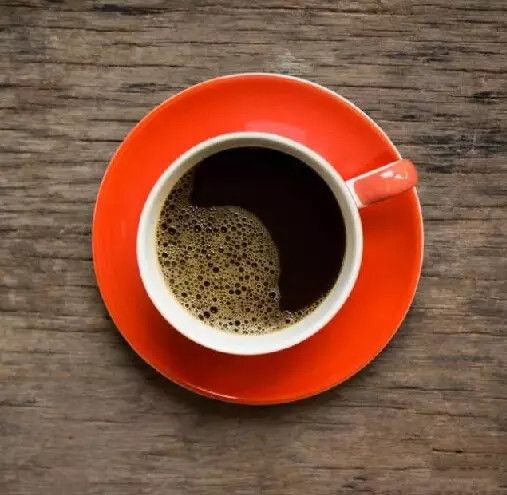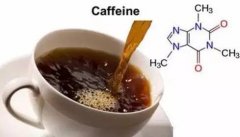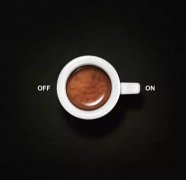Talking about Coffee: caffeine Series (3): the production of decaf Coffee

For professional baristas, please follow the coffee workshop (Wechat official account cafe_style)
At the end of the last article, it was mentioned that the problem of caffeine in recent years is not fine coffee, but energy drinks (energy drinks) made from large amounts of granulated sugar, taurine (taurine) and caffeine. At that time, the Daily Mail reported this month that a 19-year-old athlete had died suddenly on the eve of taking a fitness test for the Royal Navy. The medical examiner pointed out in the toxicology report that the "cannot rule out" culprit was that the heart was overwhelmed by the amount of caffeine equivalent to eight cups of coffee contained in four cans of energy drinks consumed by the deceased every day.
"wash" caffeine
Caffeine in energy drinks is often "washed" from coffee beans: companies that make decaf sell by-products to soda factories or energy drink plants to make the best use of them.
The caffeine in the beans can not be removed without "soaking" and "isolation". In 1903, the German Ludwig Roselius tried to extract caffeine with a series of acids and bases and successfully isolated it with a benzene solution. Later, he patented the method under his own name (Roselius Process), and his decaf factory was the predecessor of the multinational company Kraft. However, because benzene is a carcinogen, this method has been discontinued.
The so-called direct and indirect refers to where caffeine is taken out. The former method is to rinse the boiled raw beans with different solutions so as to reduce the caffeine in the beans. The indirect method is to soak out the taste of raw beans before separating caffeine from the water with a solution.
"low cause" has no international standard.
Readers may ask, "won't soaking in water lighten the taste of coffee?" The answer is yes. Therefore, the most popular Swiss water treatment method in the industry (Swiss water process, SWP), which is a contract manufacturing company in Canada, does not produce coffee itself, and has nothing to do with Switzerland). Its principle is to brew a batch of spare coffee to saturate the water (Green Coffee Extract) and separate the caffeine with activated carbon. The coffee put in later will not be clear except caffeine because it is in a state of saturation. The ideal content can be achieved after repeated several times.
There is a method called natural low-cause treatment (natural processed decaf), which is actually washed with natural substances (ethyl acetate). This common substance in fruits and vegetables is harmless to the human body, so it is called "natural". (note: most of the ethyl acetate used in the treatment plant is artificial. )
How low can be considered as low? In fact, there is no international standard for the percentage of caffeine in "decaf". The caffeine content in beans of the so-called decaf coffee drunk in the United States is less than 3% (3%). The EU standard is relatively stringent, with a content of less than 1/1000 (0.1 per cent) with a low cause standard.
How does decaf taste? What will the boutique coffee industry think of it? We will continue the next issue.
Patrick Tam (owner of the boutique coffee shop Knockbox, approved barista of the American and European boutique coffee associations, CQI recognized cup tester, Cup of Excellence's first Hong Kong resident judge, www.facebook.com/Knockboxcoffee)
Important Notice :
前街咖啡 FrontStreet Coffee has moved to new addredd:
FrontStreet Coffee Address: 315,Donghua East Road,GuangZhou
Tel:020 38364473
- Prev

Talking about Coffee: caffeine Series (2): the harm of caffeine Addiction
Professional baristas Please follow the Coffee Workshop (official Wechat account cafe_style) I have heard the elder say that people who really like coffee are afraid of both bitterness and caffeine. At that time, the author was still short-sighted and was puzzled by this statement. Now I finally understand that fine coffee pursues a sense of hierarchy and a balance of sour and bitter taste. The higher the score of coffee, the more fructose, the sweeter it should be. Instant coffee and commercial grade
- Next

Taste characteristics of decaf coffee caffeine content of decaf coffee
Professional barista communication please follow the coffee workshop (Wechat official account cafe_style) the author is not addicted to coffee; I like fine coffee, purely for appreciation and taste. Like many people, they still have bright eyes after drinking caffeinated drinks at night. Many people fear that drinking Coke will hinder sleep, so they use zero sugar or low cause instead. But to me, without caffeine, it's not Coke.
Related
- Beginners will see the "Coffee pull flower" guide!
- What is the difference between ice blog purified milk and ordinary milk coffee?
- Why is the Philippines the largest producer of crops in Liberia?
- For coffee extraction, should the fine powder be retained?
- How does extracted espresso fill pressed powder? How much strength does it take to press the powder?
- How to make jasmine cold extract coffee? Is the jasmine + latte good?
- Will this little toy really make the coffee taste better? How does Lily Drip affect coffee extraction?
- Will the action of slapping the filter cup also affect coffee extraction?
- What's the difference between powder-to-water ratio and powder-to-liquid ratio?
- What is the Ethiopian local species? What does it have to do with Heirloom native species?

